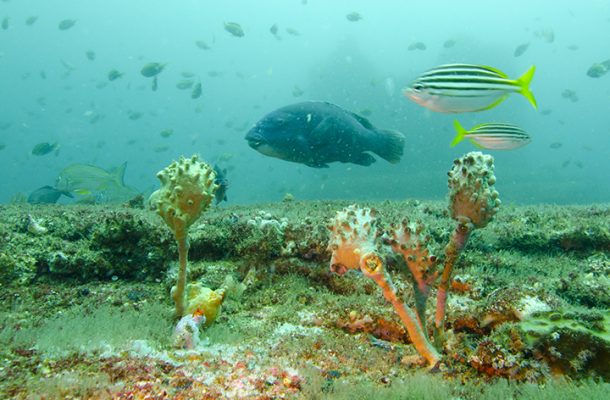Sydney’s desalination plant proves a good plaice for fish

Australia’s fast-growing cities may come to increasingly rely on desalinated water as long term drought grips the country. New research, led by Southern Cross University, has found an unexpected benefit at the Sydney Desalination Plant as its discharge of excess salty water attracts lots of fish.
Lead researcher, Professor Brendan Kelaher from the University’s National Marine Science Centre, said there was an almost three-fold increase in fish numbers around the desalination discharge outlet.
“There was a 279 per cent increase in fish life. It is an important result, as large-scale desalination is becoming an essential component of future-proofing the water supplies of major cities, such as Sydney, Perth, and Melbourne,” Professor Kelaher said.
“With growing populations and climate uncertainty, water security has become a global concern. Desalination is one way to help shore up water supplies in many parts of the world.”
The seven-year study was jointly conducted by Southern Cross University and the University of New South Wales both before and after Sydney Desalination Plant’s initial start-up in 2010, as well during a period when the plant temporarily ceased operations.
The results “Effect of Desalination Discharge on the Abundance and Diversity of Reef Fishes” are published in the journal Environmental Science & technology.
“At the start of this project, we thought the hypersaline brine would negatively impact fish life. We were both surprised and impressed at the clear positive effect on the abundance of fish, as well as the numbers of fish species,” Professor Kelaher said.
“Importantly, the positive effects on fish life also included a 133 per cent increase in fish targeted by commercial and recreational fishers.
“As to why fish like it so much, we think they might be responding to turbulence created by dynamic mixing associated with the high-pressure release of the brine. However, more research is needed.”
The Sydney Desalination Plant, one of the largest in the world, was restarted in January 2019 due to the ongoing drought and below-average rainfall across catchments. It produces up to 15 per cent of Sydney’s drinking water with the potential for future expansion.
The plant uses reverse osmosis to convert salty seawater into fresh drinking water. This process results in massive amounts of hypersaline brine discharged 300 metres offshore.
“Supporting growing populations in coastal areas will require infrastructure development,” Professor Kelaher said.
“Like the Sydney Desalination Plant, we should design these assets to not only minimise environmental impacts but also capitalise on opportunities for habitat enhancement.”
Open Forum is a policy discussion website produced by Global Access Partners – Australia’s Institute for Active Policy. We welcome contributions and invite you to submit a blog to the editor and follow us on Twitter, Facebook, Linkedin and Mastadon.











